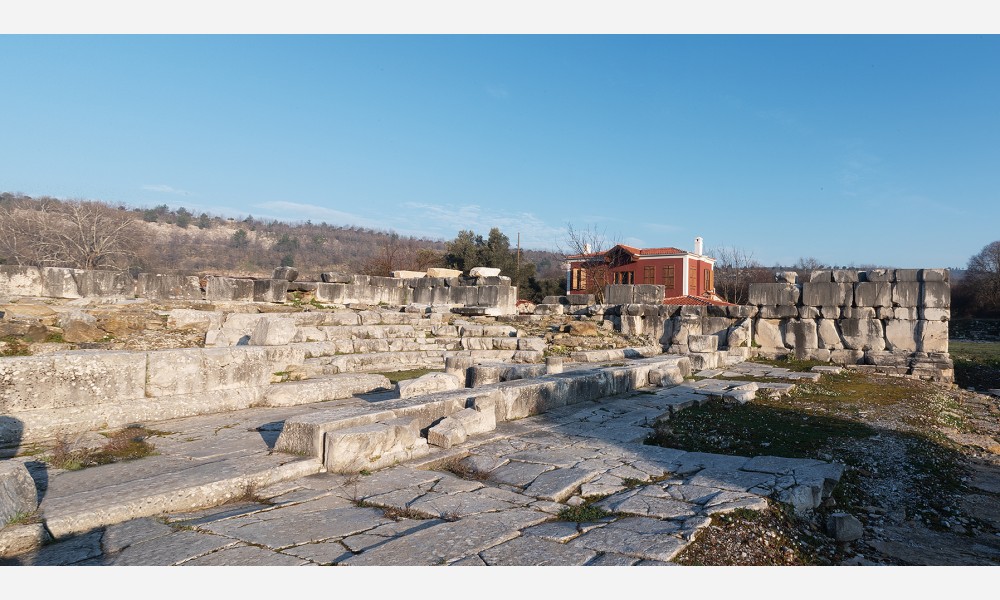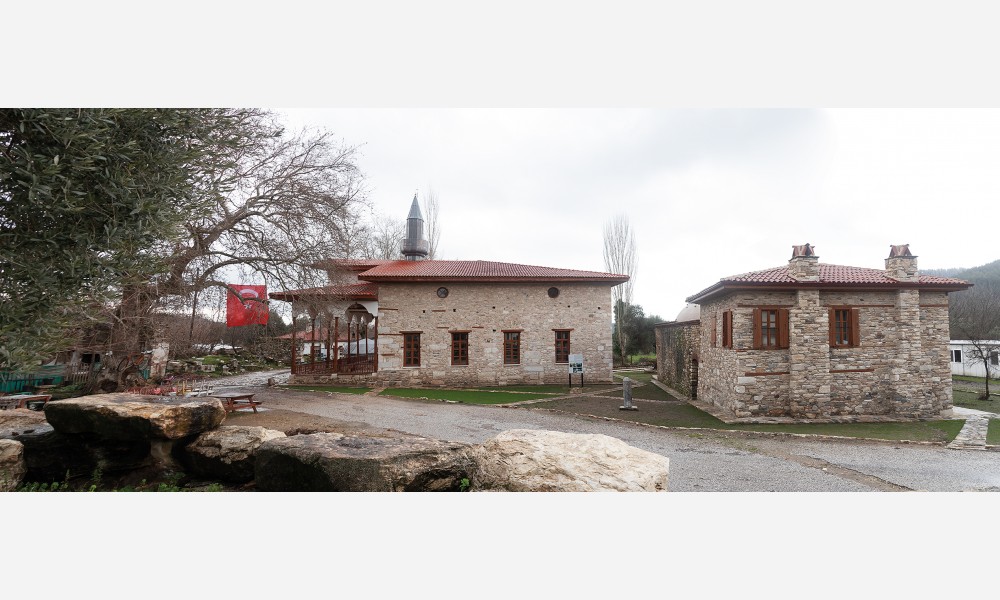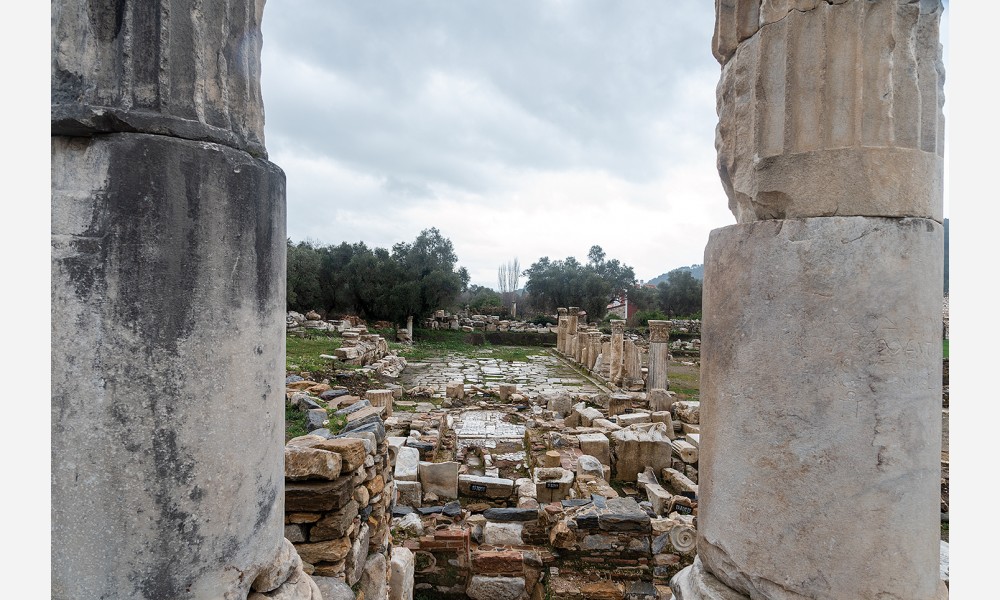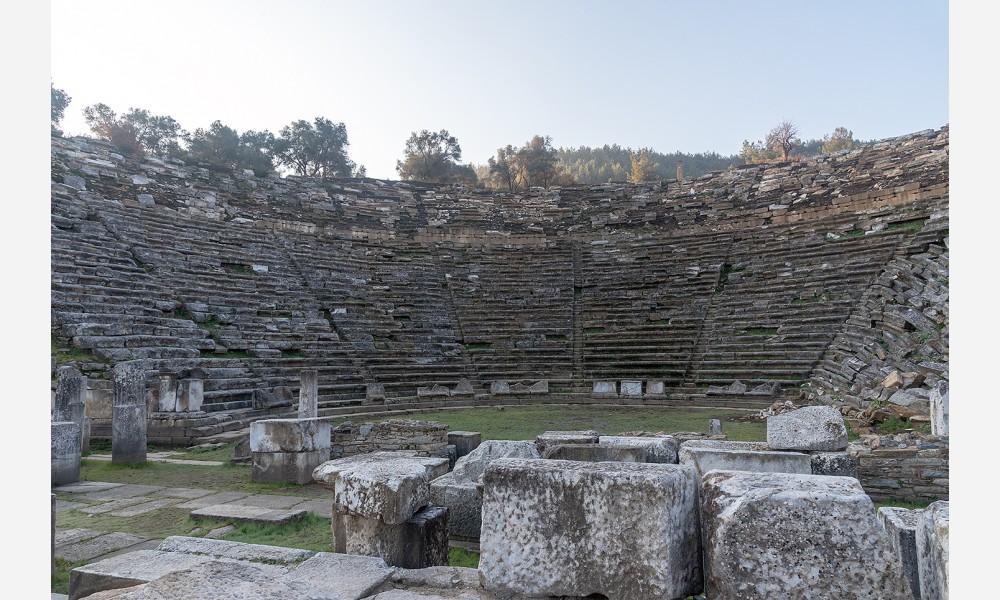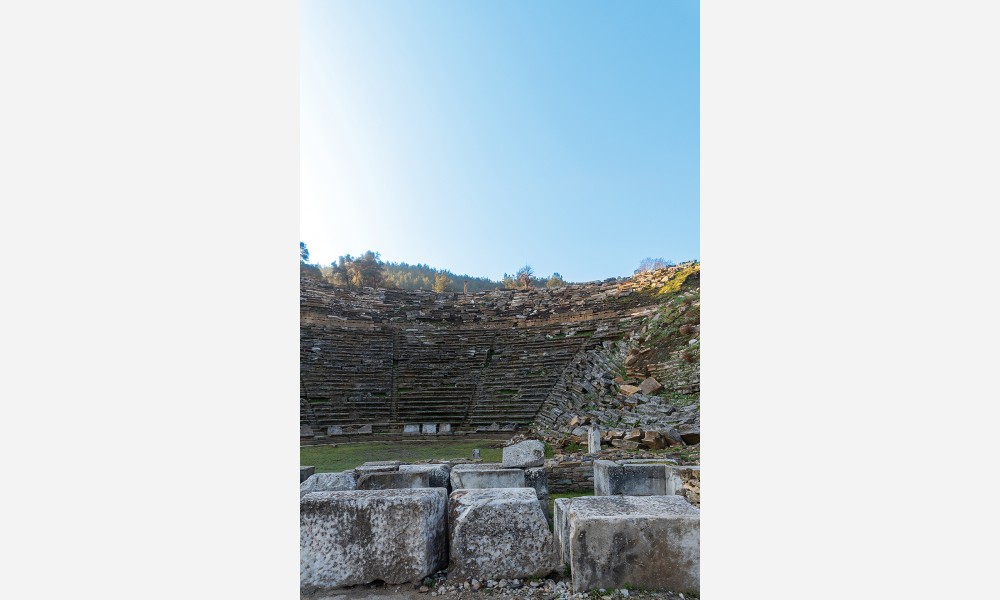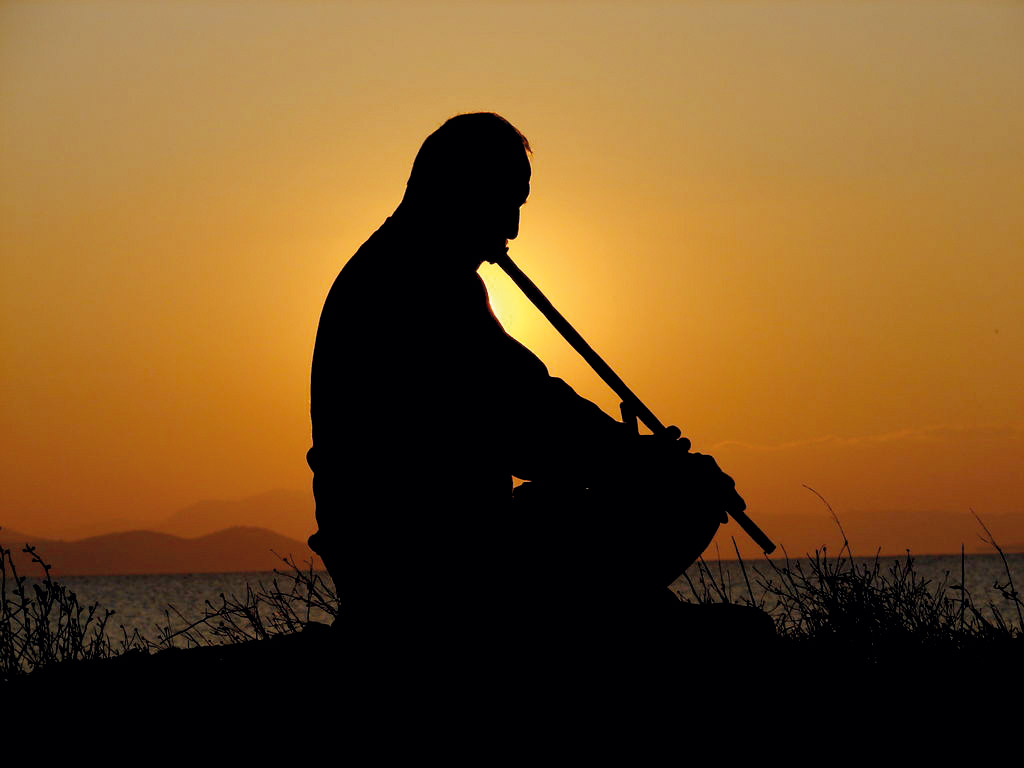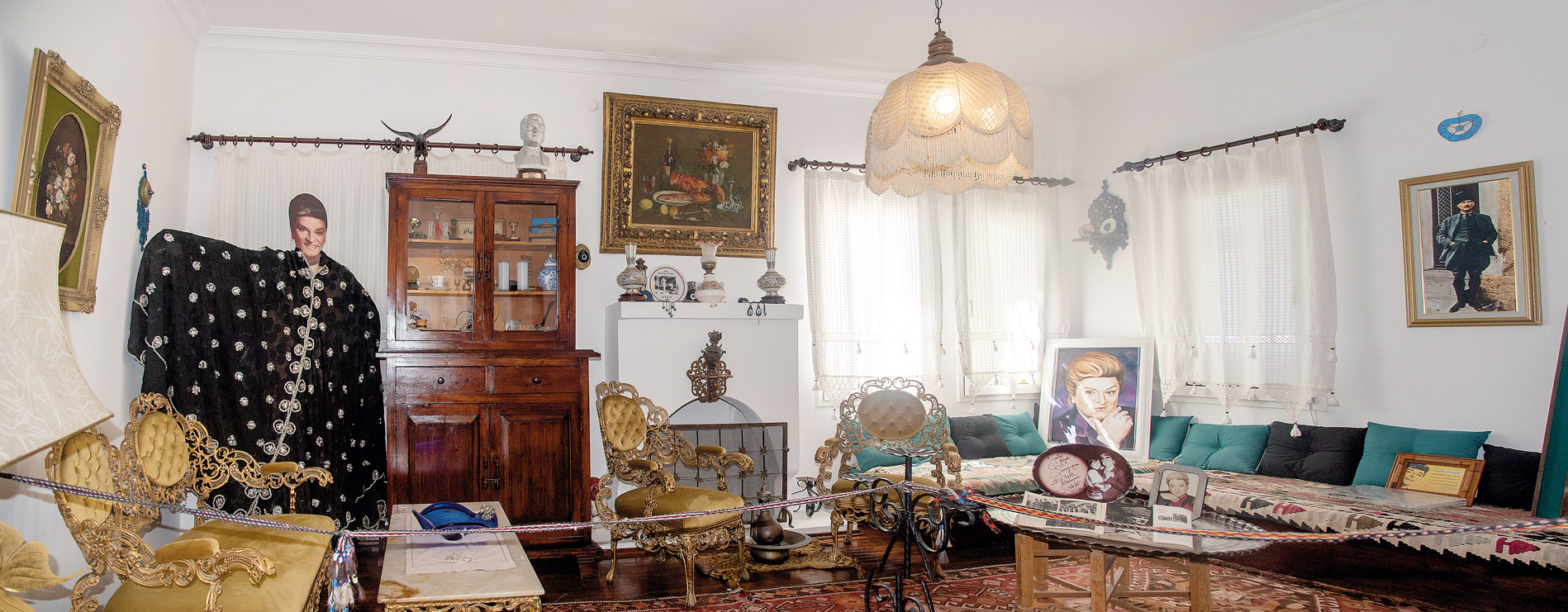City of Love and Gladiators… Stratonikeia

City of Love and Gladiators…
The biggest marble city in the world… The biggest Gymnasium of Anatolia…
Stratonikeia welcomes its visitors with pride as the ruins of ancient times can be seen while walking on its stone-paved historical streets built in the Ottoman period under the shadow of the grand plane trees, and additionally, it is the only city to have had village cafes, where people have been stopping over, since the Early Republican Period.
The ruins of buildings from the Late Bronze Age to every period make Stratonikeia unique as the “Living History City”.
When you look around, you can see traces of Hellenistic, Byzantine, Ottoman, Republican era and even principalities. You realise that you are switching between places. The secret you do not know yet is that you will also be able to travel between times. Another time in every step you take… The ages and the ancient times are almost on parade there.
The name of the settlement was recorded as Atria in the Hittite Period, as Khrysaoris and Idrias in the Archaic and Classical Periods.
In the Hellenistic Period when it was built of white marble, a father and his son passionately fell in love with the same woman, who must have been so beautiful that her name has remained in Stratonikeia as sealed. Eskihisar, which is the name of today's village settlement, has been used since the Period of Principalities.
Stratonikeia is located in the Eskihisar Village of the Yatagan district of Mugla. Yatagan-Milas highway runs through the northern edge of the ancient city. The historical city, where the ancient period, Ottoman and Republic buildings are located, fascinates its visitors at the entrance. With the wooden roof and its extraordinary architecture, Saban Aga Mosque, dating back to the early 1900s, and the hammam, which is thought to have remained from the period of principalities, appears as the historical neighbours of the city. After taking a walk along the square, where various structures that existed during the Ottoman and Republican periods salute us, we finally reach the agora of the ancient city. Before we continue, let us take a brief look at the history of the city:
Stratonikeia, whose oldest artefacts found in archaeological excavations date back to the Bronze Age, is mentioned in many written sources, primarily in Strabon.
During the Hellenistic Period, the region had changed hands between Seleucid, Ptolemy, Macedonians, Rhodes, and Rome and hosted important political events. Stratonikeia, which was ruled by Rhodes in 188 BC, came under the Roman administration for a short period after 167 BC. Then Rhodes's reign continued again.
In the Byzantine Period, the Episcopacy of Stratonikeia was linked to Aphrodisias like the other cities in the region. Turkish Period settlements were in the city after the Principalities Period. The early monumental structures known about this period are dated to the 14th and 15th centuries AD.
The size of the ancient city can be easily understood from the walls of 3,600 metres long. The items unearthed; two different city walls, a gymnasium, a theatre, two Roman baths, two agoras, two monumental city gates, a parliament building, three temples, two colonnaded streets, three necropolis, four churches, three village square complexes, one principality period Turkish bath, three Ottoman Fountains, Agha (Chief in Ottoman) houses, and historical stone-paved roads, as a result of the excavations so far constitute the main items of the historical texture worth seeing.
While looking at the buildings around the agora, your steps lead you to the parliament building of the ancient period. Bouleuterion is a rectangular planned building located in the east-west direction in the city centre. On the west side of the building, there are sitting steps, which belonged to the statesmen, in the form of a semicircle. Latin on the outside of the north wall and Greek on the inside; There are inscriptions in two languages. The goods sold in Stratonikeia during the Diocletian Period and their prices were recorded in the Latin inscription. In this way, sales in the city were kept under control and inflation was prevented. In the Greek inscription, the calendar made by Menippos can be seen as an important historical document.
One of the biggest gymnasiums of the ancient period is in this city. The total length of the building is estimated to be 267 metres. On the north edge of the gymnasium from east to west: there is the Cold Bathing Room (Frigidarium), Oiling Room (Elabothesium), Young Men's Room (Ephebeion), the Bag Room (Koryceum) and the Powder Room (Conisterium). It is thought that the city's gladiators were also trained in the area.
The Greco-Roman type theatre, approximately 20,000-person, built with a single diazoma (A horizontal walkway), was built on the natural slope where the Kadıkulesi Hill starts in the south. The Cavea part faces north. The temple, excavated in the city, is located on an upper terrace to the south of the theatre.
The North City Gate on the North Wall is where the holy road from Lagina passes through the necropolis and reaches the city. This is why; this place has great importance as an entrance and ceremony gate.
The excavations, which had started in the city in 1977, have been carried out by Pamukkale University and headed by Prof. Dr. Bilal Sogut since 2008. Stratonikeia Ancient City, where excavations continue for 12 months of the year, is included in the UNESCO World Heritage Temporary List.
The immortal love story of Stratonike and Antiokhos...
After the death of Alexander the Great, one of his commanders, Seleukos, became the king of Syria and this region. He chose Stratonike, who was famous for her youth and beauty, as his wife. Seleukos had a son named Antiokhos, at the same age as Stratonike. One day Antiokhos contracted a serious illness. Despite all efforts, doctors could not come up with a cure. Erasistratos, a physicist was summoned to the palace. While examining his patient Erasistratos felt that Antiokhos had a different condition. He started to observe him and followed his reactions to his environment.
He told that someone in the palace would bring food to Antiokhos's room every day. One day, Stratonike entered the patient's room and at that moment the son of the king blushed, his heart began to beat faster. The heart of Antiokhos was beating so fast that it was seen under his weak ribs. Erasistratos understood that Antiokhos was in love with his stepmother and the cause of his disease was love.
He came into the presence of Seleukos and said that the cause of the disease required a difficult solution to solve and to get rid of. The king asked why it was so difficult to get rid of.
The doctor's reply: "Your son is in love with another man's wife."
Seleukos to the doctor: "Will my friend stint his wife to my son, my only heir?"
Erasistratos answers: "What would you do if he was in love with your wife, Stratonike?"
The King replies: “If my son loves her, I would not think because Antiokhos is everything to me.”
Doctor: "Then you don't need Erasistratos, my king, your family is crucial to you as a husband, father, and king."
He explained to the city council and the people of Seleukos that Antiokhos had become the king, Stratonike had become the queen, and he gave them Upper Asia.
After this marriage, Antiokhos changed the name of the city between 281-261 BC. According to the story, the city was almost rebuilt in the name of Stratonike. Antiokhos's statement "I built a white marble city called Stratonikeia for my wife" was recorded.



